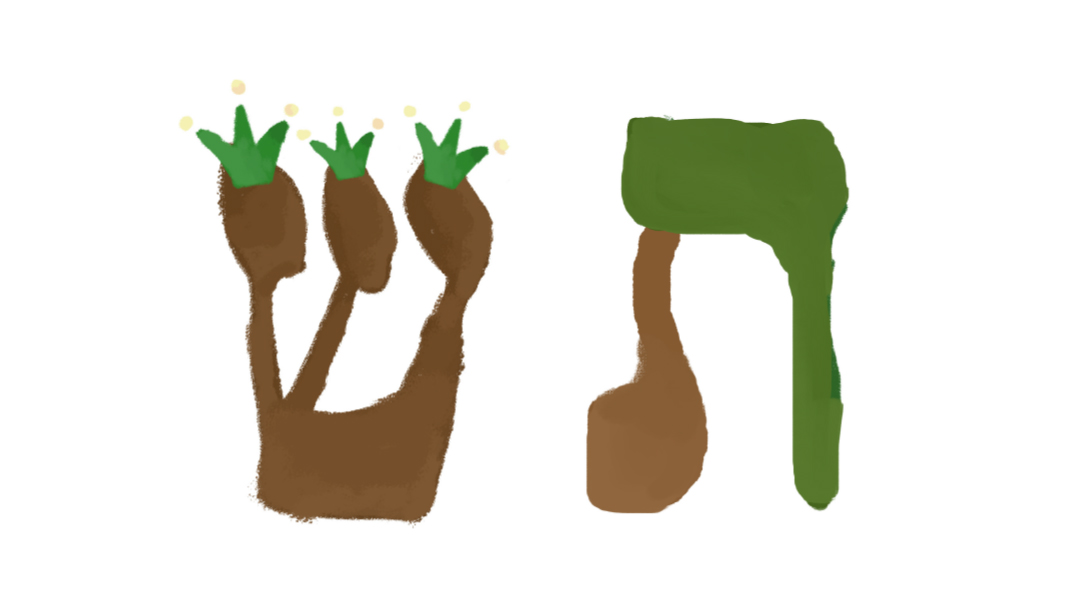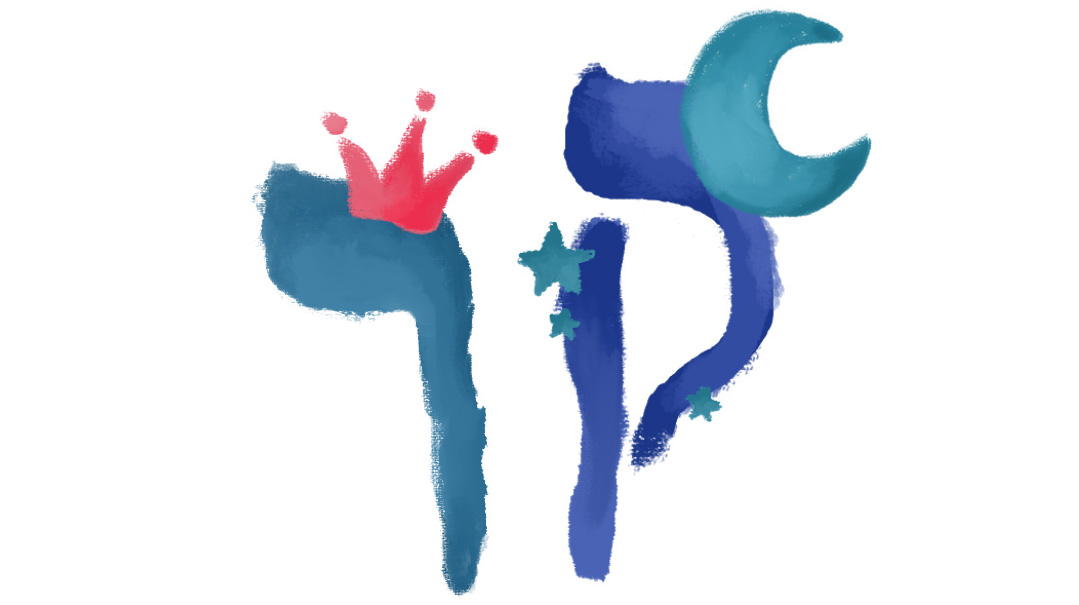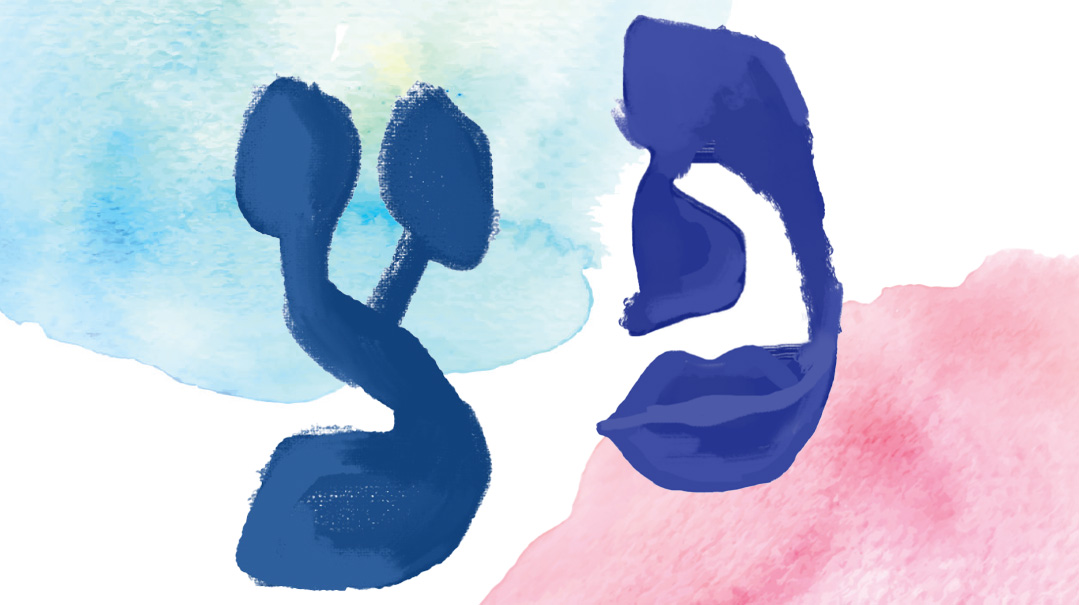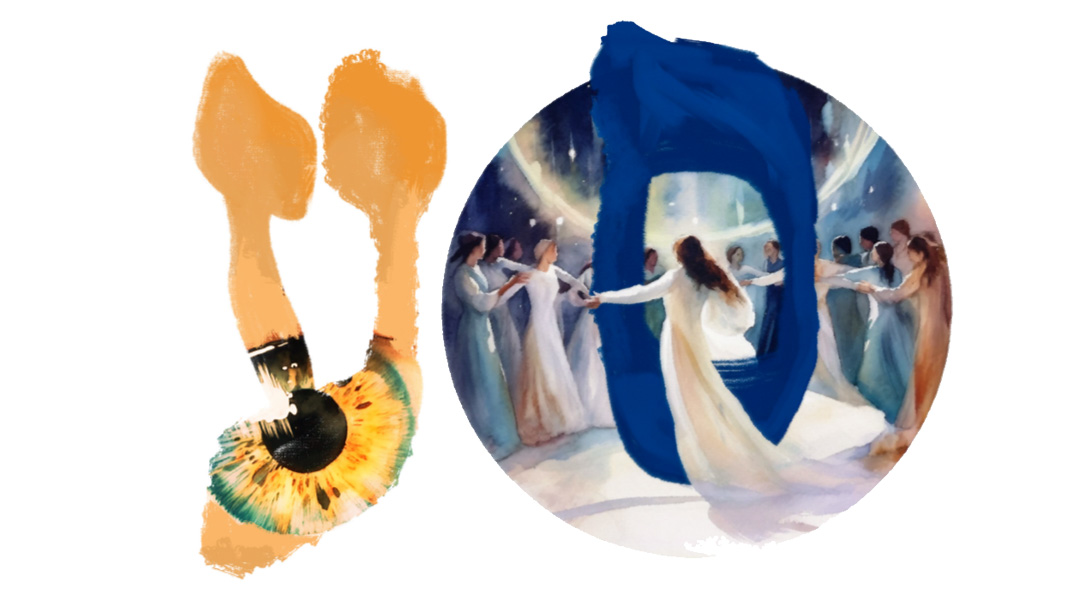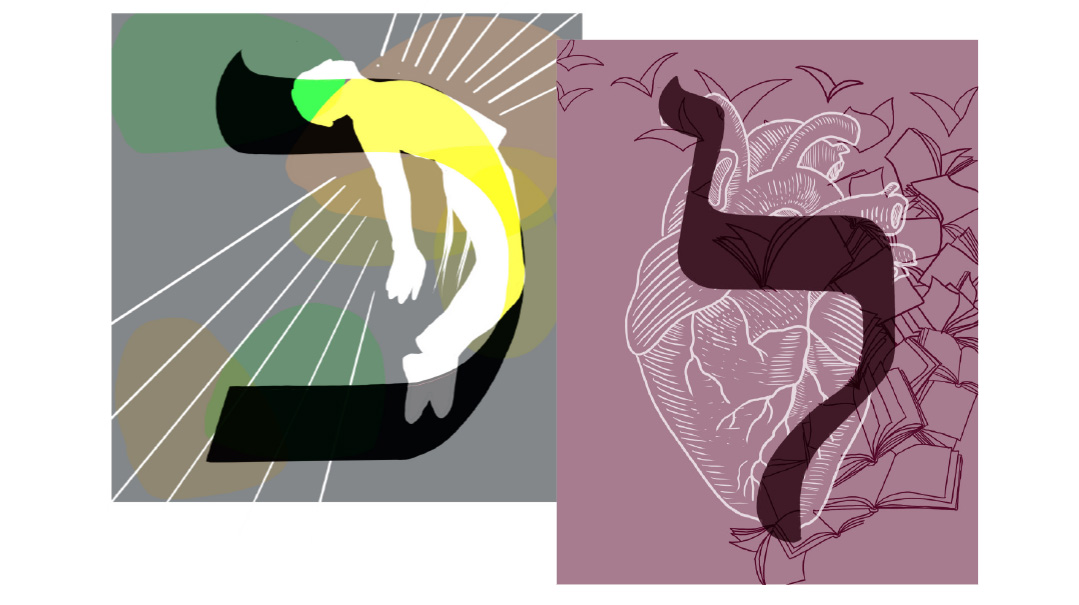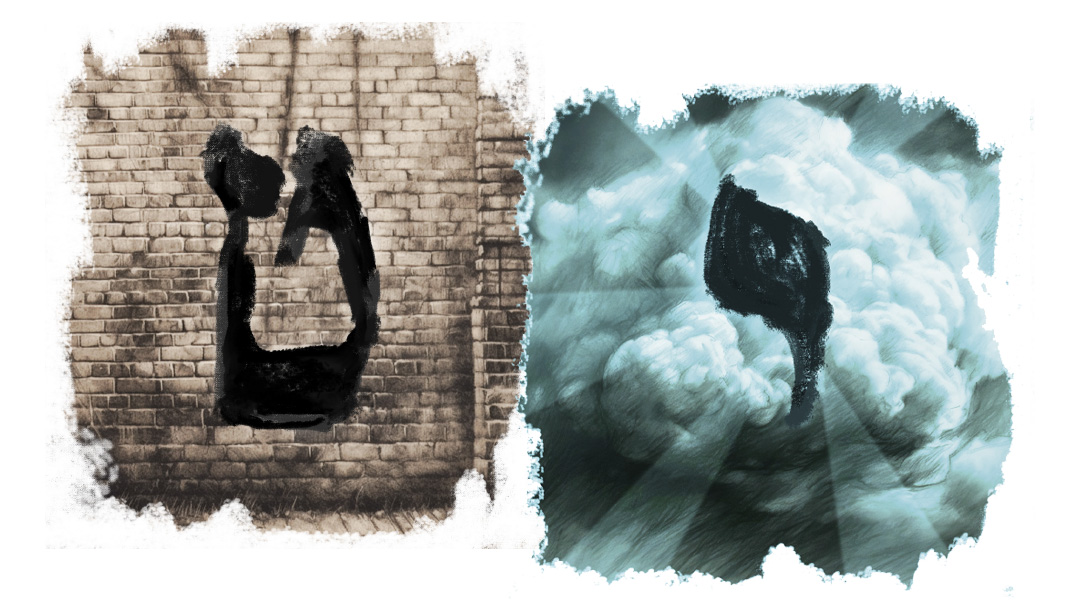Mem-Nun
| May 30, 2023Mem reflects the ability to start a process even when the outcome is concealed. Nun symbolizes the furthering of this belief
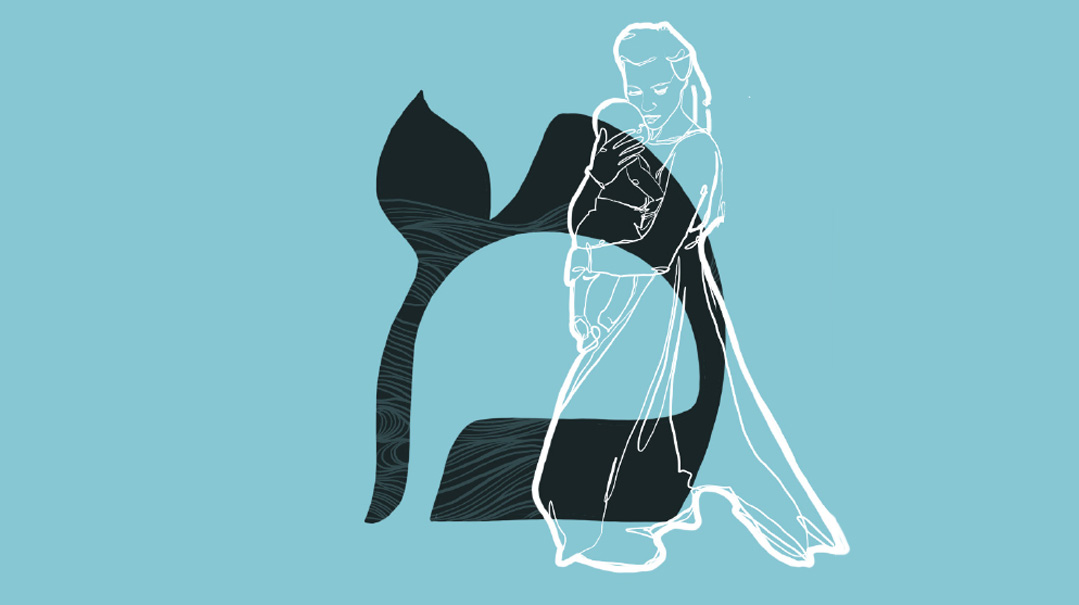
Mem
Name: Two identical sounds
Number: 40
Shape: Round with an opening, and a small piece pointing upwards
Middah: Revelation
Picture a baby playing peek-a-boo, their eyes wide with delight as they experience the thrill of, “Now you see it, now you don’t.” It’s incredible how even a young child connects to this pattern of concealed and then revealed.
The letter Mem has a “revealed” form — at the beginning or in the middle of a word, its shape contains an opening. It also has a “concealed” form — the Mem Sofis at the end of a word, which is completely closed.
Life is a cycle of concealment and revelation. There are times in our life where we openly experience Hashem’s goodness, the happy ending, the light at the other end of the tunnel. Yet there are other times when Hashem’s kindness is hidden; we don’t see how it all makes sense. Sometimes we find the lost wallet, other times we miss the plane and have no idea why. In either case, we need to look upwards towards Hashem and see that He is there.
The word for water, “mayim,” begins with an open Mem and ends with a closed one. When Adam was initially placed into the world, he gazed at a desolate expanse. Realizing he had no power on his own, he called out to Hashem and davened for rain. (Rashi, Bereishis 2:5) If we’re experiencing a moment of hester panim and confusion, instead of becoming paralyzed, the Jew’s response is to pray. In its physical form, rain is produced by the evaporation of water, which rises up to form clouds and is eventually released downward. Rain is the ultimate symbol of Hashem showering us with brachah — when we reach out to Him from below.
As the 13th letter of the alef-beis, Mem corresponds to the Thirteen Middos Harachamim, which were given to us after the Cheit Ha’eigel to show Hashem’s desire to accept our teshuvah, even when we mess up so royally. Thirteen is also the gematria of ahavah (love) and echad (one) because while we may not always feel it, everything is intertwined and stems from a single source — Hashem’s love for us. The name of the letter itself, Mem, contains both an open and closed Mem — teaching us that the good and apparent bad are all one.
Mem’s gematria is 40, which signifies the completion of a process of development and/or renewal: The mikveh’s purifying waters must have a minimum of 40 se’ah; the Mabul lasted 40 days; Moshe Rabbeinu learned the Torah over 40 days on Har Sinai; Bnei Yisrael wandered the desert for 40 years; there are 40 days between Rosh Chodesh Elul and Yom Kippur, when we work intensely on renewing our bond with Hashem. And just as a baby develops over 40 weeks of gestation, Mem reminds us that life is a continuous process of transformation. It teaches us to embrace the beauty of starting something new, despite the fear of the unknown.
“Mother” in many languages contains the Mm sound. A mother is that person who can sit patiently through a process — carrying a child, raising him — with no guarantee of success, but believing that it’s worthwhile. This middah is displayed by Miriam Haneviah, who had the foresight to ask her father to continue having children amidst the turmoil in Mitzrayim. She saw beyond the pain and suffering and was able to envision a potentially brighter future. And in Miriam’s zechus we received the symbol of this process — a well of water to carry us through the desert. Water flows, it symbolizes the ever-dynamic processes of life, which take us on a journey to a destination we trust will be for our best.
Now we can better understand the Mishnah in Avos (5:21) which states that age 40 is when a person achieves binah, insight. Now he or she has completed the stage of acquiring knowledge and can begin to build on that information. As children, we have a certain expectation to understand everything. Children don’t like unexpected changes and want a clear-cut plan. But as we mature, it becomes clear that even though we have our goals, plans, and dreams, we have no clue how it will actually work out. We accept that we can’t always understand. And yet, even though we don’t know what the outcome will be, we make ourselves vulnerable by jumping in anyway — and going with the flow.
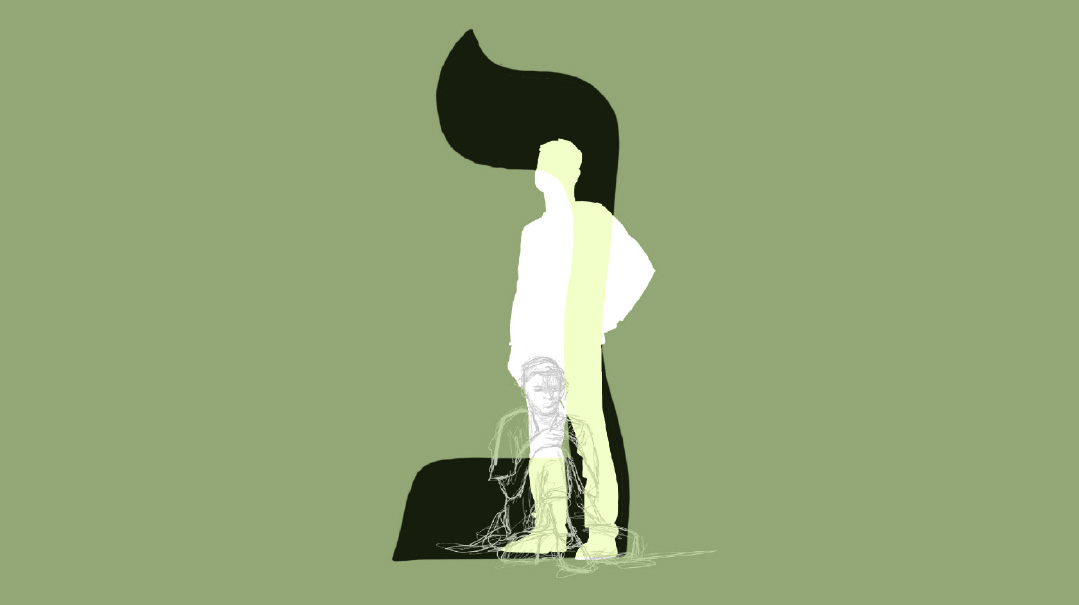
Nun
Name: Similar to yinon, meaning everlasting
Number: 50
Shape: Bent over, like someone who fell
Middah: Loyalty
The Nun’s shape portrays someone who is bent over or has fallen down (Shelah Hakadosh). It represents moments when we make mistakes, experience doubts, or struggle to see the good in a situation. But within this bending and falling down lies an essential truth: When we acknowledge our errors, seek to improve, and ask for guidance, Hashem is there to support us. He is the Somech Noflim, the One who uplifts the fallen. Through this lens we can understand the absence of the letter Nun in Ashrei — because Nun signifies the state of falling down, a situation which has spiritual significance when in conjunction with Hashem’s support (as we will see further with the letter Samech). A Nun cannot exist alone; failure will always eventually meet comfort.
Fifty signifies transcending to a new level of wisdom: We received the Torah on the 50th day after Pesach; there are 50 levels of wisdom mentioned in the Gemara (Rosh Hashanah, 21b), and Pirkei Avos (5:21) teaches that one who reaches age 50 can give counsel. Fifty is the point at which someone has enough life wisdom to understand situations and advise others. A person has seen how people go from bent to straight, how circumstances ultimately do pan out. In recognizing Hashem’s faithfulness, you aren’t only wise, you have wisdom to share with others.
The meaning behind Nun’s name can be learned from the word “yinon” (Tehillim, 72), which the Radak explains as “perpetual.” In the same vein, Nun at the end of a word signifies an ongoing reality (such as “itzvon,” a perpetual struggle) or a middah so ingrained it becomes part of a person’s identity (such as a rachman, a merciful one, or a salchan, a forgiving one). A most profound example can be seen in the word “ne’eman,” which itself means faithful or loyal one. We say that Hashem is an “E-l Ne’eman,” that we can completely rely upon Him. Nestled between the beginning Nun of the word and the final Nun at the end is the word “eim,” mother. Just as a devoted mother supports her child from when they’re bent to when they’re straight, i.e. from conception to adulthood, Hashem’s dedication to us is constant and everlasting.
Loyalty goes both ways, and inasmuch as we want to perceive Hashem’s faithfulness to us even as we make mistakes, we’re expected to remain loyal to Him even when we don’t clearly see Him in our lives. Hashem says that Moshe Rabbeinu is a “ne’eman” (Bamidbar 12:7), a shining example of someone unwaveringly loyal. Moshe’s greatness lay not in his intelligence or scholarly achievements, but rather in his ability to remain devoted to Hashem and to the Jewish people. The phrase “Keil Melech Ne’eman” with its acronym “amen,” which we find ourselves saying so many times a day, is closely associated with the concept of emunah. It’s a regular reminder that we believe Hashem will be there for us, and we, too, are “believed in” or relied upon to stay true to the Torah. Every morning we begin the day with the words, “rabah emunasecha,” a declaration that Hashem actually believes in us!
Connection between Mem and Nun
Mem reflects the ability to start a process even when the outcome is concealed, believing that the end will be positive, even if we don’t clearly see the good in it. Nun symbolizes the furthering of this belief — we remain loyal even when things don’t meet our expectations, including our own achievements. We may fall, but we reach out to Hashem for the support we need to continue.
Mindel Kassorla is a teacher, graphic designer, shadchan, and Mishpacha contributor. Her older sister, Cindy Landesman, is the head mechaneches of Shearim Torah High School for girls in Phoenix, Arizona, and the director of its Shaarei Bina adult women's education program.
(Originally featured in Family First, Issue 845)
Oops! We could not locate your form.

